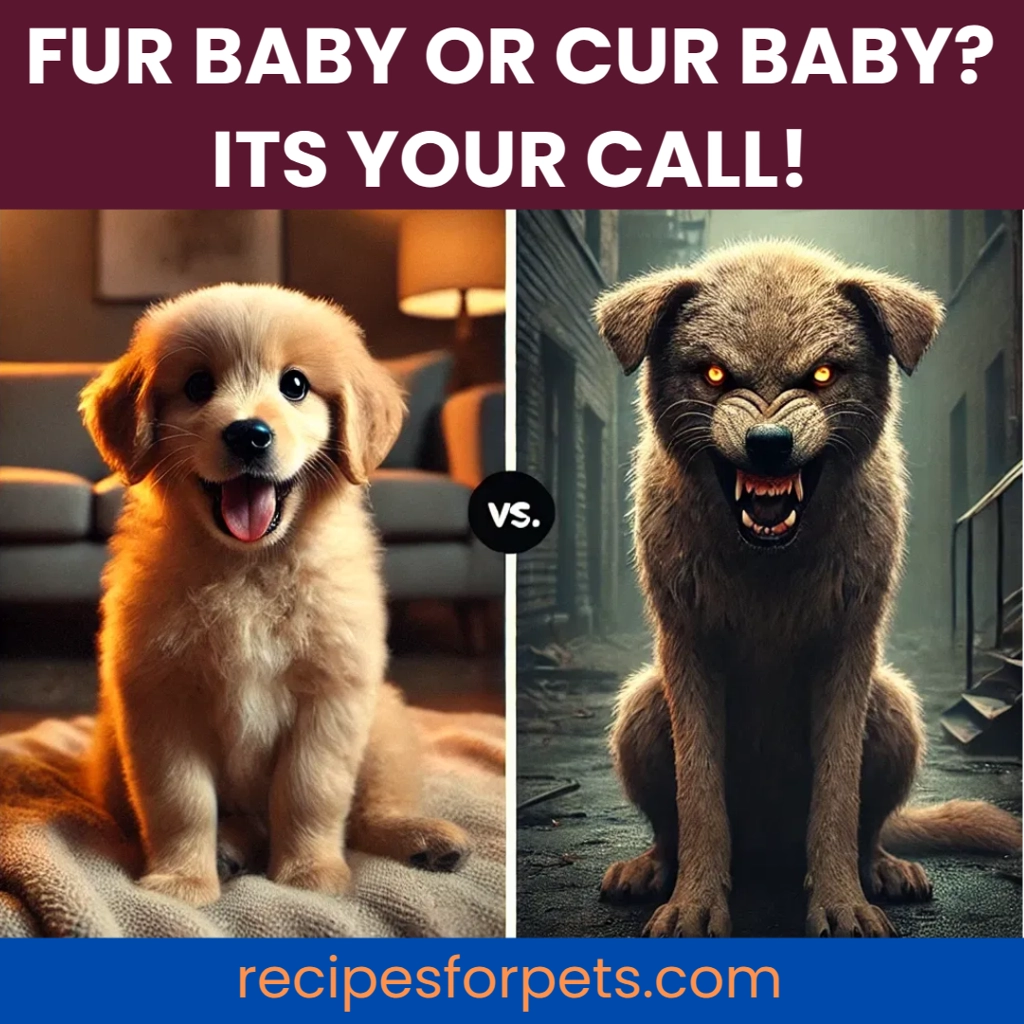Fur Baby or Cur Baby? It’s Your Call!
We’ve all heard the term “fur baby”—a playful way to describe dogs treated as beloved family members. But what happens when that “fur baby” becomes a “cur baby”: a pup with anxious, aggressive, or unruly behaviors? The difference often boils down to one critical factor: you. Your behavior, training methods, and daily interactions shape your dog’s personality and habits. While showering your pup with love is natural, without structure and understanding, even the best intentions can backfire. Let’s explore how owner choices impact a dog’s attitude and how to foster a happy, well-adjusted companion.
The Pitfalls of Overindulgence: Love Versus Spoiling
Treating your dog like a human child might seem harmless, but dogs thrive on structure, not spoiling.
Overindulgence—think endless treats, zero rules, or carrying a toy breed everywhere—can create a demanding, entitled pup. Dogs are pack animals; without clear leadership, they may assume the role of top dog themselves, leading to:
- Separation anxiety (if they’re never taught independence),
- Resource guarding (from inconsistent access to toys/food),
- Bossy behaviors like barking for attention or refusing commands.
The Fix: Set loving boundaries. Allow your dog to earn privileges through calm behavior. Use meal times, walks, and play as opportunities to reinforce obedience (e.g., sitting before receiving dinner). This builds trust and prevents entitlement.
Inconsistency is a Dog’s Worst Enemy
Dogs crave predictability. If you let them jump on the couch one day but scold them the next, confusion breeds frustration. Inconsistent rules teach dogs to test limits, which can escalate into stubbornness or aggression.
The Fix: Establish clear, non-negotiable house rules. Involve all family members in enforcing them. If “no begging at the table” is the rule, stick to it every time. Consistency helps dogs feel secure and understand their role in the “pack.”
The Power of Positive Reinforcement
Yelling, physical punishment, or dominance-based training (like alpha rolls) might stop bad behavior temporarily, but they damage trust and increase fear. A scared dog is more likely to become reactive or shut down.
The Fix: Reward what you want to see. Use treats, praise, or playtime to reinforce good behavior. For example, if your puppy sits calmly instead of jumping, immediately reward them. Redirect unwanted behaviors (like chewing shoes) by offering a toy instead. Positive reinforcement builds confidence and strengthens your bond.
Socialization and Stimulation: Keys to a Well-Adjusted Dog
A dog that’s rarely exposed to new people, animals, or environments may become fearful or aggressive. Similarly, boredom from lack of mental stimulation can lead to destructive habits like digging or excessive barking.
The Fix:
- Socialize early and often: Introduce your pup to diverse sights, sounds, and experiences in a positive way. Puppy classes are great for controlled interactions.
- Challenge their brain: Use puzzle toys, scent games, or training sessions to keep them engaged. A tired dog is a happy dog—both physically and mentally.
Understanding Canine Needs vs. Human Projection
Dogs don’t think like humans. Hugging a dog that dislikes it, dressing them in costumes daily, or expecting them to “get over” fears without support can stress them. Likewise, skipping walks because “it’s raining” ignores their instinctual need to explore.
The Fix: Learn your dog’s body language. Respect their preferences (e.g., not all dogs enjoy dog parks). Prioritize their biological needs: daily exercise, sniffing time, and species-specific play (like fetch or tug-of-war).
From Cur Baby to Fur Baby: It’s Never Too Late
Even if your dog has developed challenging habits, change is possible. Start with small steps:
- Reinforce basic commands (sit, stay, leave-it) to rebuild communication.
- Create a routine for feeding, walks, and training to reduce anxiety.
- Seek professional help if needed—a certified trainer can address severe issues.
Remember, leadership isn’t about dominance; it’s about guiding your dog with patience and empathy.
Conclusion: Your Choices Shape Their Future
Every interaction with your dog is a teaching moment. By balancing affection with structure, consistency, and respect for their instincts, you’ll raise a confident, well-mannered companion. Whether your pup becomes a “fur baby” or a “cur baby” truly is your call. Choose wisely, and you’ll both enjoy a happier, healthier life together.
So, the next time those puppy eyes beg for a third treat or permission to rule the roost, ask yourself: Am I nurturing a partner—or creating a problem? The answer lies in your hands (and their paws).


Leave a Reply
You must be logged in to post a comment.